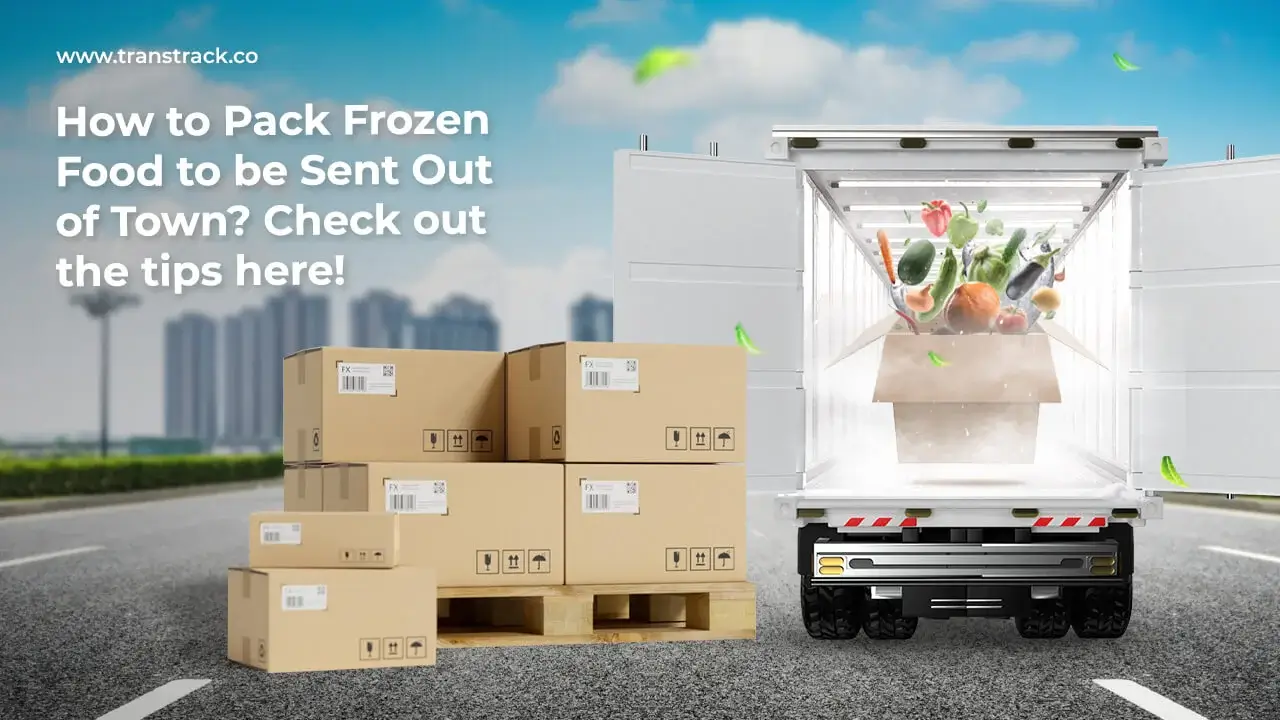How to Pack Frozen Food to be Sent Out of Town? Check out the tips here!

The frozen food business is increasingly popular among people who love the convenience and practicality of preparing food. Moreover, many businesses want to expand their reach by shipping frozen food products to various cities. However, one big challenge faced in this business is how to pack frozen food to keep the product fresh during the shipping process.
As we know that frozen food is one type of processed food that is prone to damage and does not last long if it is at room temperature. Therefore, how to pack frozen food has a very important role in running this business.
Then, how to pack frozen food or frozen food that is safe to be sent out of town? Come on, find out the answer in the following article TransTRACK!
Definition of Frozen Food
Before discussing more about how to pack, let’s first understand what frozen food is. Frozen food is food that has been processed and then frozen to maintain its freshness. This freezing process is done to stop the growth of microorganisms, slow down chemical changes, and retain nutrients in food.
Frozen food is a type of food that is stored in very low temperatures in the freezer to make it durable and long-lasting. Generally, frozen food is stored at -18 degrees Celsius. Examples of frozen food include meat, chicken, fish, vegetables, fruits, bread, ready meals, and others.
Proper packing is very important to maintain the quality of frozen food during storage and distribution. Wrong packing can make frozen food quickly thaw, crystallize, or even spoil. Therefore, it is important to understand how to pack frozen food properly.
6 Ways to Pack Frozen Food to Ship Out of Town
It is important to understand that packing for frozen food is not a trivial task, especially when the product will be shipped to a remote location. Here are some tips on how to pack frozen food to be shipped out of town:
Choose the Right Packing Material
Choose packing materials with good thermal insulation capabilities, such as Styrofoam. This material can keep the temperature inside the package low during transportation. Use bubble wrap or packing peanuts to physically protect the product and ensure there are no air gaps that can affect the temperature inside the package.
Use of Tight and Waterproof Packaging
Ensure that the product is wrapped in high resilience plastic or bubble wrap that is tight and waterproof. This helps protect the product from weather conditions that may be unexpected during shipping. Place the product in a special bag or bag designed for frozen products. Make sure that the bag can be closed tightly.
Add Dry Ice or Ice Gel
For products that require very low temperatures, add dry ice to the packing. Make sure the dry ice is evenly placed around the product. If dry ice is not available, use ice gel which can help keep the temperature in the package low.
Arrange Products Safely
Arrange the products carefully in the packing, making sure that no product is in direct contact with the packing wall. This helps maintain an even temperature. If possible, use dividers or separators to avoid direct contact between frozen products. This helps prevent the products from thawing each other during transit.
Clearly Label and Handling Instructions
Make sure each package is clearly labeled, including product information, handling instructions, temperature to be maintained, and expiration date. Include instructions for the recipient on the steps to take upon receiving the product, such as immediately placing the product in the freezer. This helps the recipient to store and process the product properly.
Use of Specialized Boxes
Use specialized boxes such as cooler boxes that are suitable for the size and shape of the product. Boxes that are too big or too small may affect the stability of the product during shipment. Ensure that the box is reinforced with additional adhesive or protection to prevent damage during shipment.
Tips for Storing Frozen Food for Longevity
In addition to the attention to the way of packing, the storage of frozen food in the storage area also has an important role. Here are some tips for storing frozen food to keep it fresh:
Set the Right Storage Temperature
Make sure the freezer in the storage area reaches at least -18 degrees Celsius to maintain the freshness of frozen food.
Use Appropriate Packaging
When storing frozen food in your home freezer, make sure to use packaging that is tight and suitable for the type of product. Avoid using packaging that has been opened or damaged.
Manage Product Rotation
Practice product rotation by placing older products at the back and newer ones at the front. This ensures that products do not go past their expiration date.
Don’t Free and Re-freeze Repeatedly
Avoid re-freezing too often, as this can reduce the quality and freshness of frozen food.
As the frozen food business grows, it is important to pay attention to innovations in logistics management, especially when products are shipped out of town. One solution that can support the efficiency and success of this business is to integrate a Fleet Management System from TransTRACK.
Fleet Management System is a sophisticated solution that can help businesses optimize the management of a fleet of delivery vehicles. By using this system, businesses can monitor vehicle trips, manage delivery routes, and optimize fuel usage. This not only increases operational efficiency, but can also increase the speed of delivery of frozen food products to various destinations, thereby increasing customer satisfaction. Immediately consult with the TransTRACK team and start improving your business logistics operations in order to improve customer service to the maximum.
Topic





